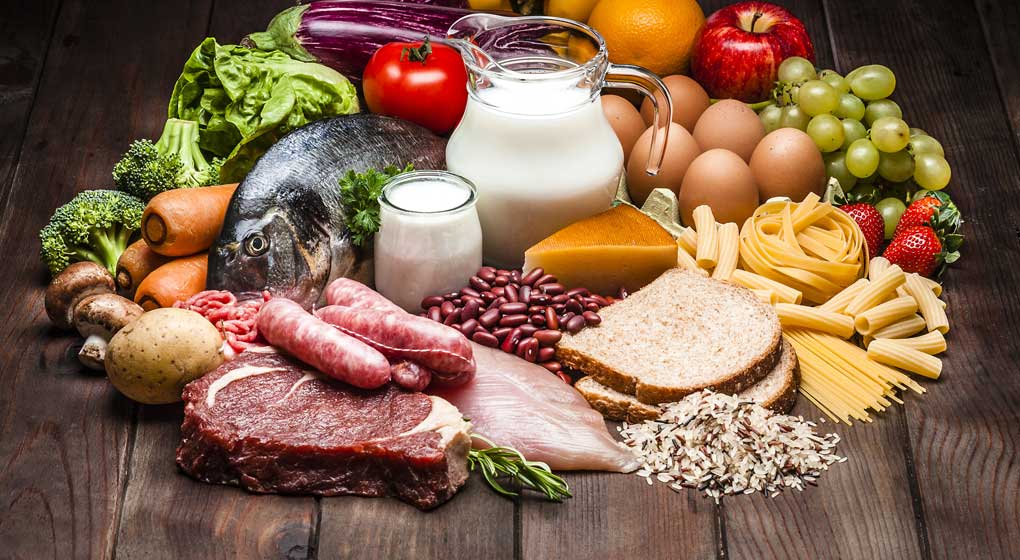Health & nutrition
Red meat is eaten and loved by millions of people around the world. In the UK 96% of people eat meat.
Lean red meats including beef, pork and lamb play an important part in a healthy balanced diet. They have a high nutrient density and are an essential source of iron, zinc, omega-3 and protein – all nutrients that are needed to keep the body and brain functioning well. Meat is also an important natural source of B vitamins, including B12, which is not found naturally in foods of plant origin.
Quick nutrition facts
- Beef and lamb provide zinc, vitamin B12, omega-3, niacin, riboflavin, vitamin B6, pantothenic acid and phosphorus.
- The iron and zinc in beef and lamb are much more easily absorbed by the body than that found in plant-based foods like legumes, spinach and grains.
- The type of omega-3 fat found in beef and lamb is the same ‘healthy’ fat found in fish.
- Vitamin B12 is only found in animal foods. So if you don’t eat meat, chicken, fish, eggs or dairy products, a supplement is required.
- The redder the meat, the higher the iron content. When compared to the same amount of chicken, beef and lamb have triple the amount of iron and zinc.
- Eating beef and lamb regularly can help to maintain your body’s iron stores and prevent iron deficiency. Maintaining a healthy level of iron in the body is particularly important for young girls and women to counter iron loss through menstruation and for babies and toddlers to cope with the need for more iron as they grow.
Fat
The fat content of red meat has been considerably reduced over the last few decades and the amount of fat in red meat is actually much lower than most people think. These reductions have been achieved by breeding techniques on the farm and new butchery techniques, which trim off most of the fat.
Fully trimmed lean raw beef typically contains only 4.3% fat, fully trimmed lean raw pork only 4% fat and fully trimmed lean raw lamb only 8% fat. This compares well with a food such as cheddar cheese, which contains an average of 34% fat.
About half of the fat found in red meat is in the unsaturated form that is believed to be healthier. Surveys show that meat is a major contributor of monounsaturated fat in the diet. Choosing lean cuts of meat and trimming off any visible fat helps to reduce the saturated fat content further.
Salt reduction
Salt consumption in the UK has been slowly reducing but is still too high at 8.1-8.8g/per day per person. Over recent years, the UK Government, through the Food Standards Agency (FSA), has focused on the public health benefit of lower dietary sodium intake. They have principally focused on the link between lower salt intake and lower risk of hypetension and cardiovascular disease.
Through a combination of consumer awareness and partnerships with food producers, a significant improvement has already been achieved with many foods now containing up to 40 or 50% less salt than previously. The focus has been firmly on educating the public on the one hand and product re-formulation by food producers on the other. However, more still needs to be done to bring down further the level of salt consumed by British people.
BMPA has been working closely with the Food Standards Agency to develop guidance for the meat sector on how to approach the process of reducing salt in meat products. BMPA members have been quick to respond to the challenges of reformulating their products to meet the more stringent guidelines and to bring consumers new products that are both tasty and healthy.
Information resources
AHDB guidance on health claims for beef, lamb and pork
The purpose of these guides is to demonstrate how meat can be promoted to consumers accurately using scientifically substantiated nutrition and health claims expressed in consumer-friendly language. It is hoped that using and reinforcing the use of the claims will help improve consumer understanding about the contribution meat can make to a healthy balanced diet throughout life.
- Understanding Nutrition and Health Claims for Lamb
- Understanding Nutrition and Health Claims for Pork
- Understanding Nutrition and Health Claims for Beef
Food – a fact of life website
Food – a fact of life (FFL) is a comprehensive, progressive education programme which communicates up-to-date, evidence-based, consistent and accurate messages around ‘food’ to all those involved in education. The website, provides free resources for teaching young people aged 3-16 years about where food comes, cooking and healthy eating. In addition, teacher’s professional development, across all stages and phases, is supported ensuring that they are better equipped.
To support teachers, the Food – a fact of life website features:
- a range of classroom resources and activity packs, linked to the curriculum;
- tried and tested recipes, designed for use by children;
- professional development advice and support, as well as training opportunities, for teachers;
- advice on whole school food approaches, including resources for parental engagement.
The integrated approach, of whole school, curriculum and professional development, provides something unique – a ‘one stop-shop’ to support more and better food education in schools.






